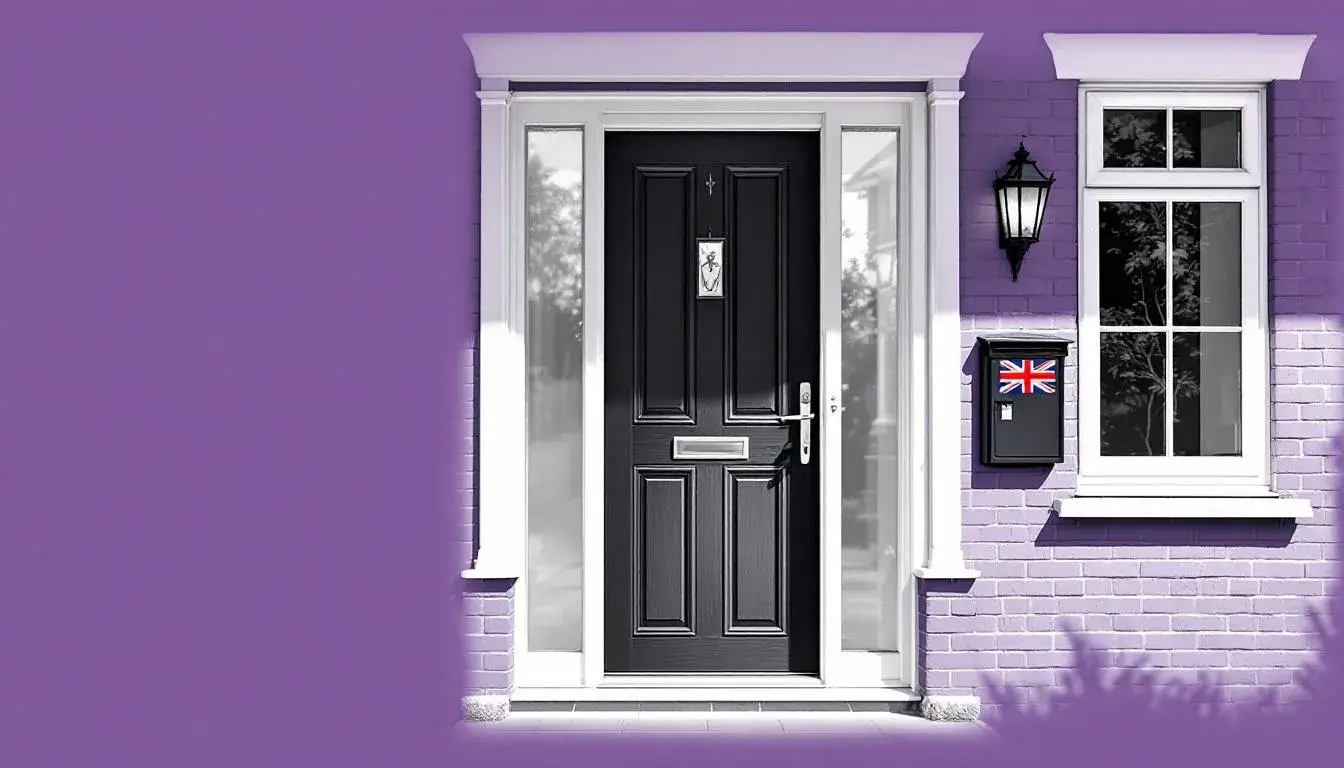
Finance for Windows and Doors

Why financing your new windows and doors makes sense in 2025
The UK window and door landscape is shifting in your favour. Market momentum is clear: the UK door market stood at approximately £2.41 billion in 2023 and is projected to reach £3.06 billion by 2029, a 3.88% CAGR driven by residential renovations and ongoing commercial activity. Composite doors already command a majority share thanks to impact resistance and energy performance, while aluminium continues to gain value share, particularly across the South, for its durability and sleek profiles. In parallel, more than 93% of homes now use double glazing and energy efficiency leads purchase decisions, supported by regulation and homeowner incentives.
Why does this matter for your budget? Because energy-efficient upgrades can help reduce ongoing bills and improve comfort year-round. Government-backed support for efficient glazing can trim annual energy costs by roughly £235, and regulations in rental properties are nudging landlords toward higher-performance fenestration. Despite cost pressures on installers and fabricators, demand remains resilient as population growth outpaces new housing delivery. On the macro side, a steadier economic outlook with inflation easing and modest growth provides a more predictable backdrop for home improvement decisions.
Financing helps you act now, not later. Spreading costs across affordable monthly payments means you can choose better-spec windows or a high-performance composite front door without draining savings. For many, that translates into improved security, warmer rooms, and potentially stronger kerb appeal that may support resale value. uPVC remains a strong budget-friendly option for 2025, while composite and aluminium suit those prioritising longevity, style, and thermal performance.
Kandoo, a UK-based retail finance broker, helps you compare lending options from a panel of providers. That means a single application can unlock multiple pathways, from promotional 0% arrangements to fixed-rate instalments or homeowner loans for larger projects. The objective is simple: transparent terms, fair rates, and a funding route aligned to your credit profile and project timeline.
Understanding APR is not just about percentages - it is about what you will pay in real terms over time. Match term length and product type to your budget and energy goals.
If you are debating whether to wait for prices to fall, remember that energy-efficient products continue to lead the market and installation costs can rise with broader input cost pressures. Financing can secure today’s specification and start saving energy sooner, rather than pushing the project into another winter.
Who will get the most value from this guide
This guide is designed for UK homeowners, landlords, and first-time buyers weighing upfenestration projects from a single composite door to full-house window replacements. If you are balancing cash flow with the desire for warmer rooms and lower bills, we will show you how to compare finance options with clarity. It is also relevant if you live in southern regions where aluminium is popular for premium aesthetics, or if you are focused on cost-effective uPVC with robust security features. Installers and small developers can also use these insights to anticipate demand patterns, shape product choices, and help clients fund upgrades responsibly.
Terms you will see and what they mean
APR: The total yearly cost of borrowing, including interest and certain fees, expressed as a percentage.
Fixed rate: An interest rate that does not change during your agreed term, simplifying budgeting.
PCP and POS finance: Point-of-sale finance arranged with the installer or broker at purchase, often with quick decisions.
BNPL deferral: Buy now, pay later structures that delay repayments, sometimes with promotional interest-free periods.
Overpayment: Paying extra towards your balance to reduce interest and shorten the term, subject to lender rules.
Secured vs unsecured: Secured loans use property as collateral for larger sums and longer terms; unsecured personal loans do not.
LTV and affordability: For secured borrowing, loan-to-value caps and affordability checks determine eligibility and maximum amounts.
Energy ratings: Window and door energy labels help estimate insulation performance and potential bill savings.
Look beyond the monthly payment - check total payable, fees, and any early repayment limits.
Your financing routes at a glance
-
0% promotional credit Short-term, interest-free instalments through selected providers. Suits smaller baskets or when you can comfortably repay within the promo window. Mind any fees or reversion rates.
-
Fixed-rate instalment loan Predictable monthly payments over 12 to 84 months. Good for mid-sized projects like a composite door plus several windows. Clear end date, straightforward budgeting.
-
Buy now, pay later deferral Delay repayments for a set period, then pay in full or switch to instalments. Helpful if you expect a bonus or remortgage window soon. Watch for post-deferral interest.
-
Homeowner secured loan Larger-ticket funding secured against property, often at lower rates and longer terms. Useful for whole-house upgrades or adding bifolds and sliders. Requires equity and due diligence.
-
Unsecured personal loan Fast decisions for modest to mid-range projects. No collateral required. Rates vary by credit profile, and terms are typically shorter than secured alternatives.
-
Green upgrade support Grants or regional schemes can contribute to double glazing or efficiency improvements. Savings of around £235 per year are achievable with effective measures.
What it might cost and what you stand to gain
| Option | Typical cost profile | Cash flow impact | Potential returns | Key risks |
|---|---|---|---|---|
| 0% promo credit | No interest during promo period | Short-term, higher monthly | Immediate energy comfort gains | Reversion to high APR if unpaid |
| Fixed-rate instalment | Fixed interest, fixed term | Stable monthly outgo | Bill savings, better security | Early repayment limits, fees |
| BNPL deferral | Little upfront, interest later | Starts after deferral | Flexibility if income timed | Steep interest after deferral |
| Secured loan | Lower rate, added fees possible | Long-term, smaller monthly | Larger project uplift, resale | Collateral at risk if unpaid |
| Unsecured loan | Rate based on credit score | Medium-term, moderate monthly | Fast installation benefits | Higher APR than secured |
Who typically qualifies and how lenders decide
Eligibility hinges on affordability, credit history, and project scope. Lenders assess your income, regular outgoings, and any existing credit commitments to confirm the repayments fit comfortably. A clean or improving credit profile helps, though near-prime options can still be available at higher rates. For unsecured loans, you will usually need proof of UK residency, a stable address history, and verifiable income. Secured borrowing involves property checks, equity, and loan-to-value criteria, along with legal processes that take longer than a simple POS loan.
Installers sometimes offer point-of-sale arrangements that prioritise speed, but you should still read the small print and compare the total payable. If you are a landlord, regulation-driven efficiency upgrades for rentals may support your case when documenting purpose and expected outcomes. Regional material trends matter too: aluminium is strong across the South, while PVCu and composite lead nationally, so lenders and installers recognise common price points and typical baskets. As a broker, Kandoo matches you with providers that fit your credit standing and project timeline, helping you avoid repeated applications that could affect your score.
From quote to installation - the simple path
Define scope, specs, and target installation window.
Gather quotes, including itemised materials and labour.
Choose a finance route after comparing APR and fees.
Submit a single application via a regulated broker.
Provide ID, income, and address documentation promptly.
Receive decision, sign agreements, confirm payout timeline.
Schedule installation and verify workmanship warranties.
Set up repayments and consider overpayments when possible.
Benefits and trade-offs to weigh up
| Factor | Pros | Cons |
|---|---|---|
| Cash flow | Spread cost, keep savings intact | Longer commitment, total interest |
| Energy efficiency | Lower bills, warmer rooms | Upfront cost still required |
| Product choice | Access higher-spec composites or aluminium | Risk of overcapitalising |
| Speed | Faster installation via POS finance | Quick decisions can reduce reflection time |
| Credit impact | Build history with on-time payments | Missed payments harm your score |
What to check before you press go
Take a step back and map repayments against your monthly budget, then layer in potential energy savings. Confirm the total amount payable, not just the representative APR, and read any clauses about deferred periods, promotional end dates, and early settlement. Ask the installer for certifications, FENSA or equivalent, and product warranties on frames, glazing, and hardware. For landlords, ensure the upgrade trajectory supports anticipated regulations for rental efficiency. If your project includes premium aluminium or large-format sliders, align design choices with local market norms to avoid overspecifying relative to surrounding stock. Finally, stress test your plan against small rate changes or a one-off income shock.
If this route is not right for you
Save-and-install later: earmark monthly savings and reassess in six months.
Remortgage or further advance: consider when rates or fixes align.
Employer or union loans: sometimes lower-cost payroll options exist.
Part-fund with grants: combine incentives with a smaller personal loan.
Phase the project: prioritise front door and draughty rooms first.
Common questions, clear answers
Q: How much can I borrow for windows and doors? A: Unsecured loans typically cover a few thousand to low tens of thousands of pounds. Secured homeowner loans can accommodate larger projects, subject to affordability and equity.
Q: Will financing negate my energy bill savings? A: Not necessarily. If repayments are manageable and you choose efficient products, the comfort gain is immediate and bill savings can offset part of the monthly cost.
Q: Are 0% promotions always the best option? A: They are excellent when you can clear the balance within the promotional period. If not, a fixed-rate instalment with a lower ongoing APR may be cheaper overall.
Q: How fast can I get approved? A: POS finance and unsecured loans can be decided quickly once documents are provided. Secured loans take longer due to property checks and legal steps.
Q: What materials offer the best value right now? A: uPVC is highly cost-effective in 2025. Composite doors lead on durability and energy performance, while aluminium suits premium aesthetics and larger spans.
Q: Do grants really help? A: Yes. Available schemes can reduce upfront costs and, together with efficient glazing, deliver around £235 annual bill savings for many households.
Ready to compare options with confidence
If funding an energy-smart front door or whole-house glazing is on your list, gather quotes and your income documents, then compare finance routes side by side. A broker like Kandoo can streamline access to multiple lenders, helping you secure fair terms and an installation timeline that suits your schedule.
Next step suggestion: request two to three like-for-like quotes and a representative finance illustration showing total payable and early settlement terms.
Important information
Kandoo is a UK-based retail finance broker, not a lender. Eligibility, rates, and terms depend on your circumstances and lender criteria. This guide is for information only and is not financial advice. Consider independent advice if you are unsure about suitability.
Buy now, pay monthly
Buy now, pay monthly
Some of our incredible partners
Our partners have consistently achieved outstanding results. The numbers speak volumes. Be one of them!


CTR MOTOR COMPANY LTD

MCINNES GROUP LIMITED









